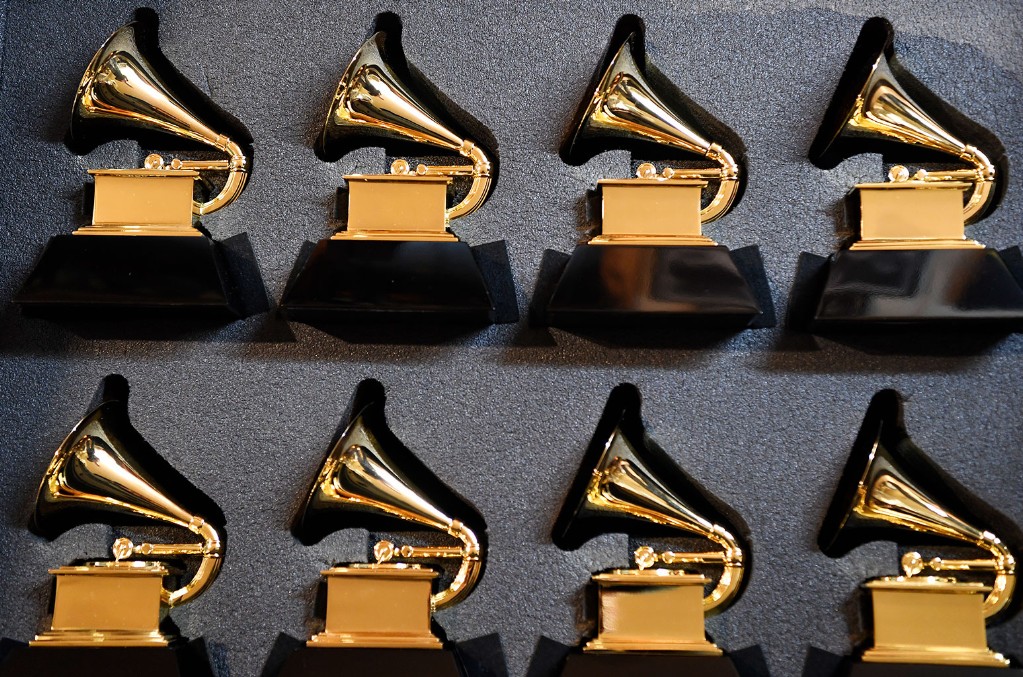The Grammys are organized into 30 different 'fields.'
Now that the Recording Academy has announced its rule changes for the upcoming 63rd Annual Grammy Awards, we know that, for the fifth year in a row, awards will be presented in 84 categories. That’s the longest that the Grammys have gone without expanding the number of categories in their history.
We also know which “fields” have the most and fewest categories. The Grammys are organized into 30 different fields. Two of these fields have eight categories. Twelve have just one.
Here’s how the various fields line up this year, from most to fewest categories. Ties are listed in alphabetical order.
American Roots Music, 8: This vast field encompasses Americana, bluegrass, blues (separate categories for traditional and contemporary), folk and regional roots music.
Classical, 8
Gospel/Contemporary Christian Music, 5: This field could have seven categories, but the Grammys compressed four potential categories into just two: best gospel performance/song and best contemporary Christian music performance/song. Even so, there are separate awards for best gospel album and best roots gospel album.
Jazz, 5: This includes best Latin jazz album, which was cut in 2011 as part of a major overhaul of the awards. The category was reinstated the following year after a spirited protest.
R&B, 5: This includes best traditional R&B performance and the renamed best progressive R&B album.
Country, 4
General, 4: This is better known as the “Big Four”—album, record and song of the year plus best new artist.
Latin, 4: In addition to these four awards, Latin is the only field that has a separate, Grammy-branded awards show. The Latin Grammys have been awarded annually since 2000.
Pop, 4: This includes best traditional pop vocal album.
Rap, 4: This includes the renamed best melodic rap performance.
Rock, 4: This includes best metal performance, but not best alternative music album (see below).
Composing/Arranging, 3: This includes best instrumental composition. Songs have to have both music and lyrics to compete for songwriting awards, including the big one, song of the year.
Music for Visual Media, 3: This rather grandly-named field — does anybody really talk like that? — is dominated by music for film and TV.
Production, Non-Classical, 3: This field has the same two categories as Production, Classical (see below), as well as best remixed recording.
Dance/Electronic Music, 2
Music Video/Film, 2
Package, 2: Why two categories for album packages? One is for best boxed or special limited edition package, which, the thinking goes, would otherwise have an unfair advantage over regular packages.
Production, Classical, 2
Alternative, 1
Children’s, 1
Comedy, 1
Contemporary Instrumental Music, 1
Historical, 1
Musical Theater, 1
New Age, 1
Notes, 1: This is for liner notes.
Production, Immersive Audio, 1: This is the category formerly known as best surround sound album.
Reggae, 1
Spoken Word, 1
World Music, 1
Crunching the Numbers: You may be surprised to learn that there were just 28 categories at the first Grammy Awards, which honored recordings released in 1958. The number remained below 84 (the current mark) though 1993, after which it started ballooning. The number peaked at 110 in 2007-’08. In 2011, the Grammys went on a crash diet, which brought the number down from 109 to 78. (It has since crept back up a bit.)
Looking at it by decade, the academy added a net six categories in the ‘50s (in this case, from 1958 to 1959), another six in the 1960s, 15 in the ‘70s, 17 in the ‘80s, 19 in the ‘90s and nine in the ‘00s. For the ‘10s, there was a net reduction of 25 categories.
For many years, the Grammy saw no downside to adding categories nearly every year. But there is a downside: It devalues the meaning of winning an award if everyone gets one. One reason the Oscars are so coveted is they don’t give that many out. There were just 24 categories last year and just four for acting — the same number of acting awards there have been since 1936. Sometimes, less is more.



